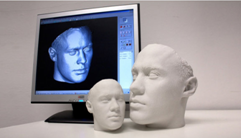What are the most promising upcoming healthcare innovations that are likely to have the biggest impact on improving patient care in 2015?
The Brigham Innovation Hub team applied its collective clinical knowledge and innovation experience to develop a list of Top 10 Healthcare Innovations in 2015. The process began by gathering ideas from both clinical and industry perspectives with special note to current healthcare trends. A shortlist of 30 innovations was compiled and voted on by more than 450 of Brigham Innovation Hub’s subscribers, which consists of BWH clinicians in a variety of health fields and members of the healthcare innovation community . Engagement, reduced costs, and digital health were found to be the top issues for 2015.
Here are the selections for 2015:
1. Use of “Big Data” to reduce the costs for high-cost patients
Only 5% of patients account for a whopping half of U.S. healthcare expenditures. Using “big data” can create algorithms for identifying patients who would more likely be “high-cost,” i.e. patients with multiple co-morbidities. This information can then be applied to make actionable predictions to prevent re-admission of this patient cohort.
2. Financial incentivizing of healthy behavior by employers
Although half of all U.S. employers offer some kind of wellness program, it is not usually taken advantage of by employees. To lower their own costs, employers are now seeing that they have to be more active in helping their employees be healthier. Companies are spending more on healthcare than they did 5 years ago and that’s because a healthier workplace means increased productivity.
3. Innovations for managing outpatient behavioral health
Up to 30% of Americans have a mental health condition but less than a quarter of them seek help. Hospitals partnering with outpatient mental health agencies create a teamwork approach to patients in crisis. The link can seamlessly transition patients in and out of the appropriate facilities when an episode occurs. The use of telepsychiatry is also on the rise, providing counseling services to remote patients.









Leave a Reply